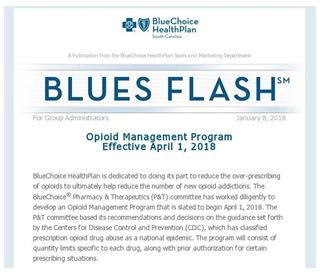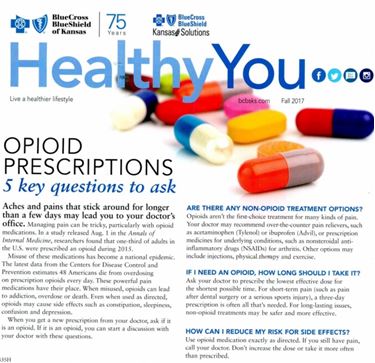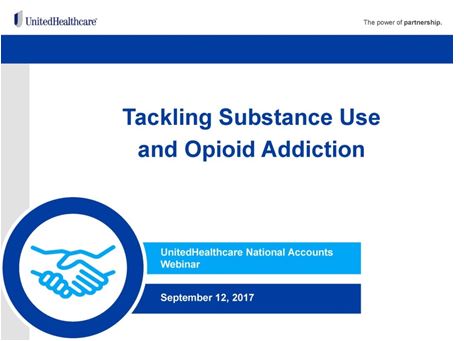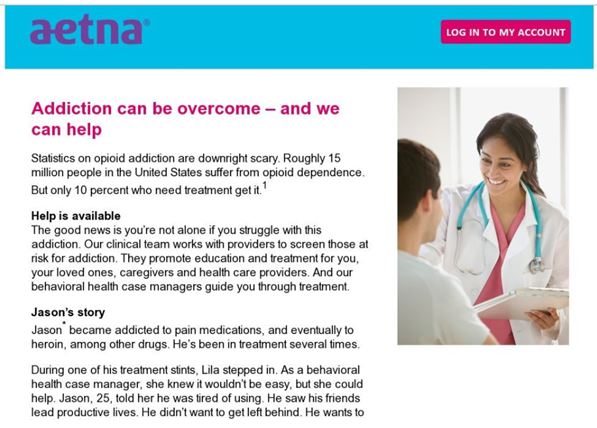Health experts say the United States is in the throes of an opioid epidemic as more than two million Americans have become reliant on or abused prescription pain pills and street drugs. Recent data from the Centers for Disease Control and Prevention show that 64,070 people died from drug overdoses in 2016—a grim 21% increase over 2015.
In 2017, the US Department of Human and Health Services declared the opioid crisis to be a public health emergency and published a 5-Point Strategy to combat it. While this was a move in the right direction, the sheer size and devastating impact of opioid addiction in the US makes it clear that this health emergency will take years of coordinated efforts and resources—both private and public—to resolve. Health insurance companies, for example, will play an integral role. As health insurers are inextricably linked to doctors, hospitals and the prescriptions their members take, many insurers have recognized the need to develop strategies to combat this crisis head on, and have begun implementing new procedures and educational efforts.
Many approaches from health insurers focus on minimizing patient exposure to opioids in the first place. This includes adding the need for prior authorizations and limiting the quantities doctors are allowed to prescribe. Another preventative tactic has been to reach out to consumers and providers directly to educate them on the dangers associated with these drugs. So far, opioid communications have been observed from a variety of carriers, including Blue Cross Blue Shield, United Healthcare and Aetna.
Blue Cross Blue Shield
Blue Cross Blue Shield is comprised of nearly 40 independent plans. As such, each plan takes its own approach to communication strategies, including those involving the opioid epidemic. Reviewing a sample of marketing materials across plans shows that many are approaching this topic aggressively. This includes sending notifications to members, employers and agents alike.
- In Fall 2017, BCBS Kansas City sent a healthy lifestyle mailer to members, taking a Q&A magazine article approach to discuss concerns of opioid abuse. Key topics included finding alternative pain treatments, how long an opioid should be taken and where/how opioids should be stored.
- In January 2018, South Carolina’s BlueChoice Health Plan sent out an “Opioid Management Program” notification to agents. The plan details the how the insurer will implement new limits on drug quantities, prior authorizations and encourages more frequent physician monitoring.


UnitedHealthcare

Aetna
In a Spring 2017 email to members, Aetna spoke about overcoming addiction. Using an empathetic tone, the company told readers they were not alone if they were experiencing addiction. The company noted that while addiction is scary and pervasive, only 10% of those suffering from opioid dependence receive treatment. Aetna went on to share stories of members who had been addicted and found help with their clinical team.
What we think
These pieces represent a small sample of the marketing materials health carriers have produced in an effort to educate consumers, agents and employers about the perils of opioid abuse. These efforts have been—and will likely continue to be—a delicate task, as Mintel’s US research on innovations in the insurance market shows that less than half of consumers say they trust insurance companies to do what’s right for their customers.
However, there are signs that insurers are making an impact. In August 2017, Anthem announced that it has found early success with efforts to reduce the number of opioid prescriptions filled at pharmacies. After a two-year effort, it was able to reduce opioid prescriptions by 31.4% in May 2017. It has since created a new goal of a 35% reduction by 2019.

































